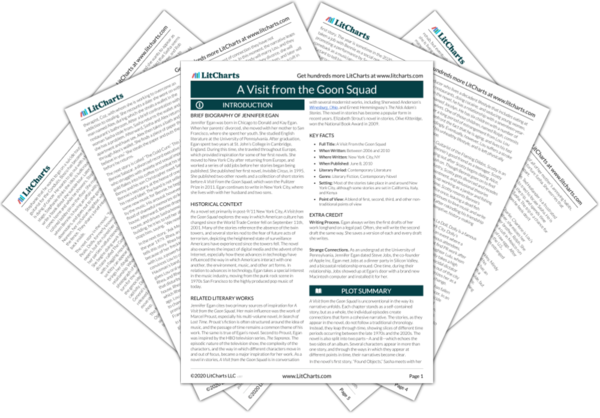AI ToolsNew
Tools to make learning and teaching easier
|
Previous
Chapter 10
|
A Visit from the Goon Squad: Chapter 11 Summary & Analysis |
Next
Chapter 12
|


Upgrade to unlock the analysis and theme tracking for all of Goon SquadA Visit from the Goon Squad!
Get LitCharts A+